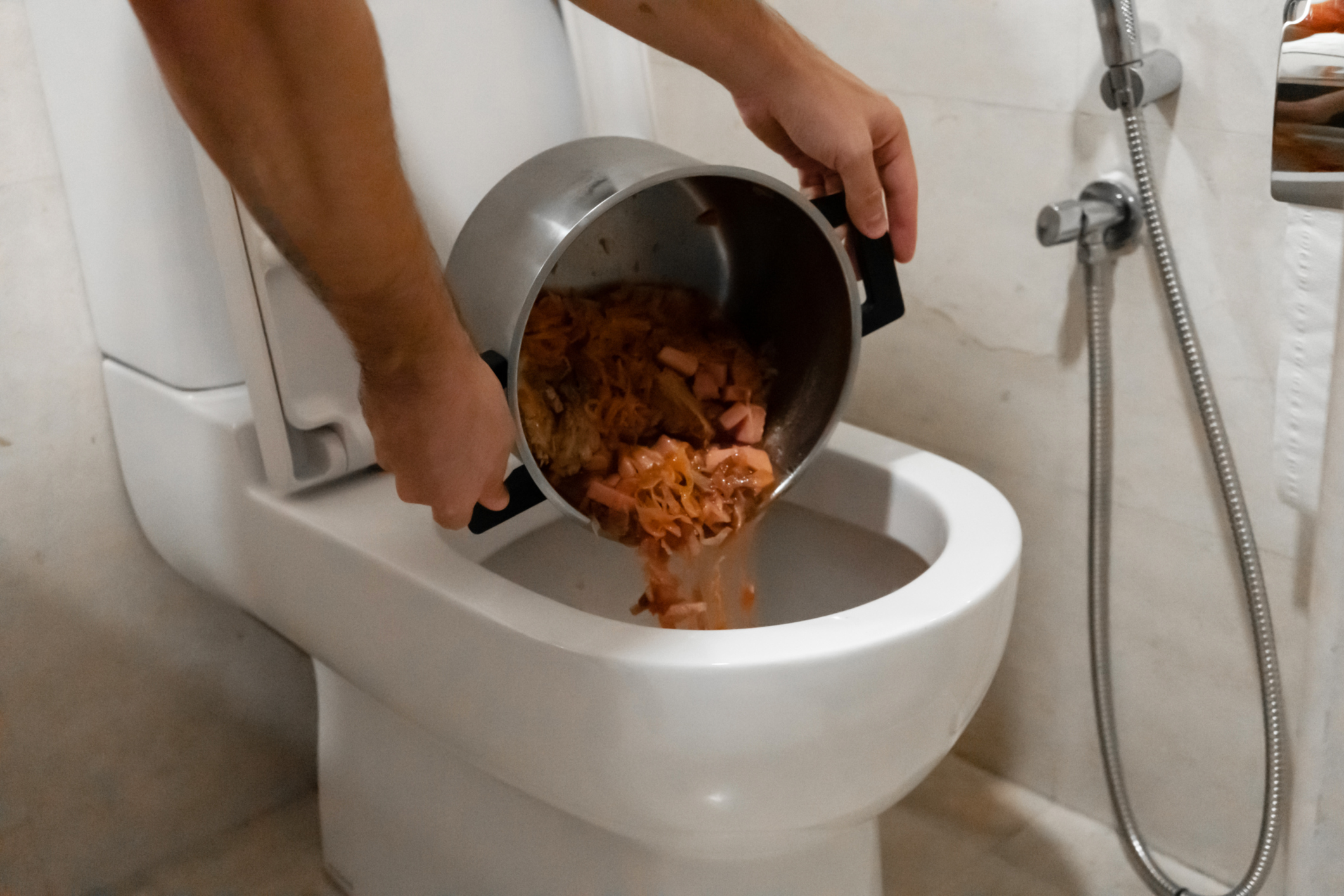Are you currently interested in guidance concerning Is it safe to flush food (especially rice) down the toilet??

Intro
Many individuals are often faced with the predicament of what to do with food waste, especially when it comes to leftovers or scraps. One typical concern that develops is whether it's fine to flush food down the commode. In this article, we'll delve into the reasons why individuals could think about purging food, the effects of doing so, and alternate techniques for appropriate disposal.
Reasons people might take into consideration flushing food
Absence of awareness
Some individuals might not know the prospective harm caused by flushing food down the bathroom. They might incorrectly believe that it's a safe method.
Convenience
Purging food down the bathroom might seem like a quick and easy service to taking care of undesirable scraps, specifically when there's no close-by trash bin readily available.
Laziness
In some cases, individuals may simply choose to flush food out of large idleness, without thinking about the effects of their activities.
Consequences of flushing food down the toilet
Ecological influence
Food waste that winds up in rivers can contribute to air pollution and damage marine communities. Furthermore, the water made use of to purge food can stress water sources.
Pipes problems
Flushing food can cause clogged pipelines and drains pipes, triggering pricey pipes repair services and inconveniences.
Sorts of food that should not be purged
Coarse foods
Foods with fibrous appearances such as celery or corn husks can get entangled in pipelines and cause clogs.
Starchy foods
Starchy foods like pasta and rice can soak up water and swell, leading to obstructions in pipelines.
Oils and fats
Greasy foods like bacon or food preparation oils must never be purged down the bathroom as they can strengthen and trigger obstructions.
Appropriate disposal approaches for food waste
Making use of a waste disposal unit
For homes geared up with garbage disposals, food scraps can be ground up and flushed with the pipes system. Nevertheless, not all foods appropriate for disposal in this fashion.
Recycling
Particular food product packaging materials can be reused, decreasing waste and lessening environmental effect.
Composting
Composting is an environment-friendly method to take care of food waste. Organic products can be composted and utilized to enrich dirt for gardening.
The significance of proper waste administration
Decreasing ecological harm
Appropriate waste monitoring practices, such as composting and recycling, assistance decrease pollution and maintain natural resources for future generations.
Shielding pipes systems
By staying clear of the technique of flushing food down the commode, house owners can protect against pricey pipes fixings and preserve the integrity of their plumbing systems.
Verdict
To conclude, while it might be tempting to flush food down the commode for comfort, it is necessary to recognize the potential consequences of this activity. By taking on correct waste monitoring techniques and dealing with food waste responsibly, people can contribute to much healthier pipes systems and a cleaner environment for all.
FLUSH FOOD DOWN THE TOILET?
FLUSHING FOOD CAN CAUSE BLOCKED DRAINS IN YOUR HOME
All of the plumbing fixtures in your home are connected to the same sewer pipe outside of your home. This outdoor sewer pipe is responsible for transporting all the wastewater from your home to the Council sewer mains. Even small pieces of food that go down the kitchen sink can cause problems for your sewer. It should therefore be obvious that flushing larger bits of food, such as meat, risks a clog in either the toilet itself or the sewer pipes. Flushing greasy food is even more problematic because oil coagulates when it cools, coating the interior lining of your pipes.
THE TOILET IS NOT A BIN
Food isn’t the only thing that people shouldn’t be flushing down the toilet. People use the toilet to dispose of all kinds of things such as tampons, makeup wipes, dental floss, kitty litter and even underwear. Water goes to great lengths to educate residents about the high costs and stress placed on wastewater treatment systems simply from people flushing the wrong stuff down the toilet. It costs taxpayers millions of dollars each year, and homeowners thousands in blocked drain repairs.
FLUSHING FOOD IS A WASTE OF WATER
Flushing food is a waste of our most precious resource - water. In June this year Level 1 water restrictions were introduced to protect water supply from drought conditions. Much of New South Wales continues to be affected by prolonged drought with recent figures revealing up to 97 per cent of the state remains in drought. Depending on whether you have a single or dual flush toilet, every single flush uses between five and 11 litres of water. In the current climate this is a huge amount of water to be wasting on flushing food that should be placed in the bin (or better yet, the compost).
https://www.jabplumbingsolutions.com.au/blog/can-you-flush-food-down-the-toilet

I was shown that editorial about from a pal on our other blog. Sharing is good. One never knows, you will be helping someone out. Thanks a lot for your time. Return soon.
Quote
Comments on “Are You Capable to Flush Food in the Toilet?”